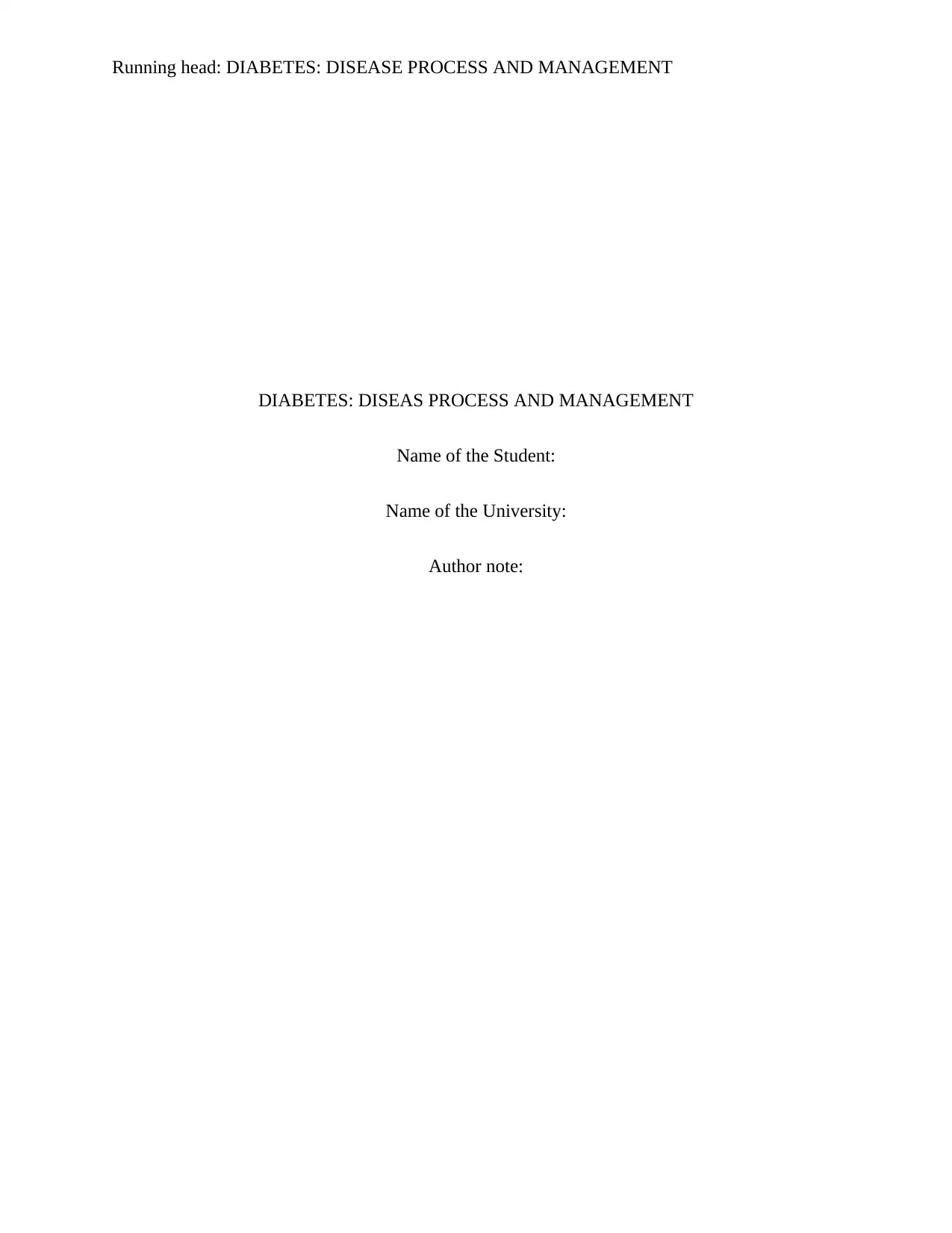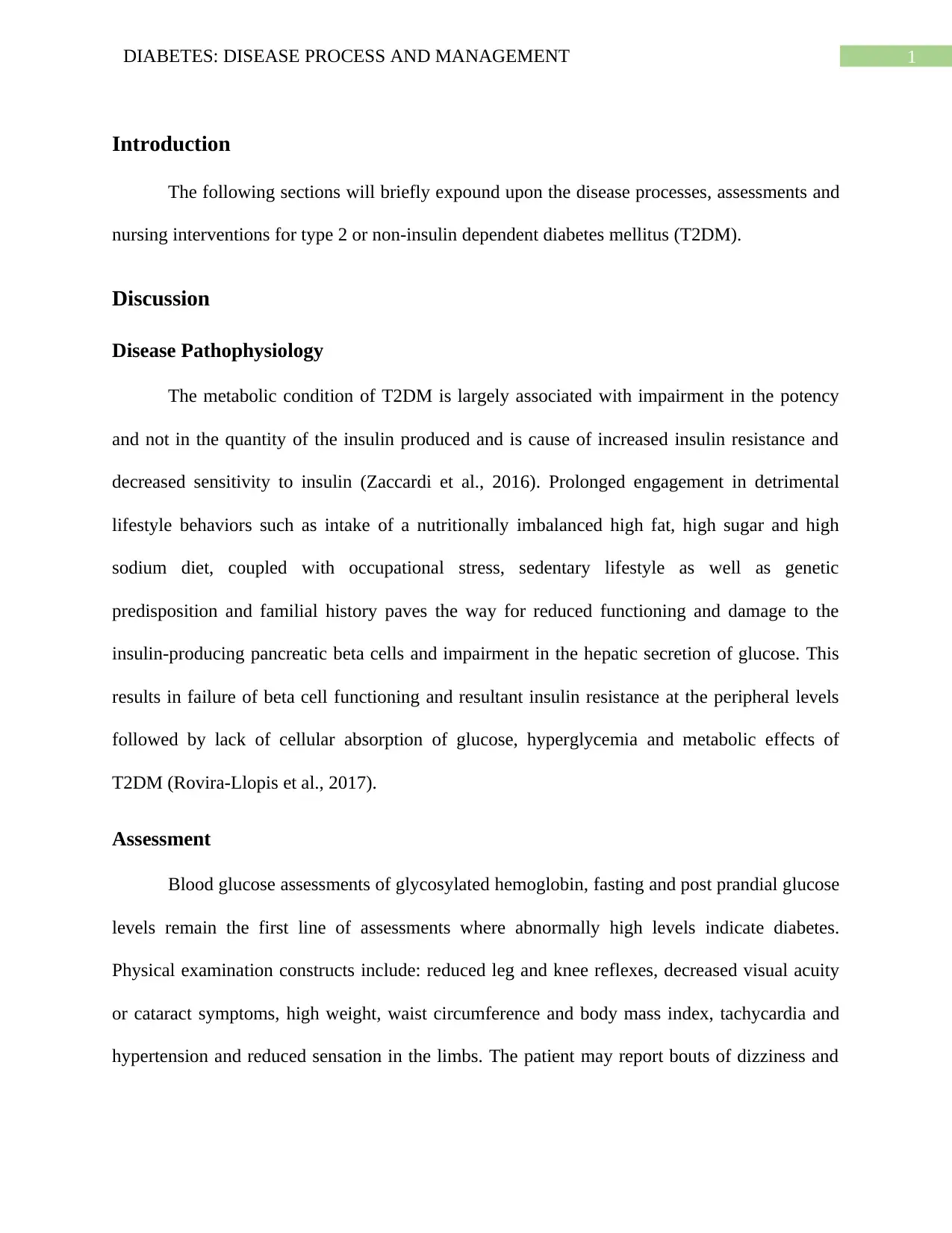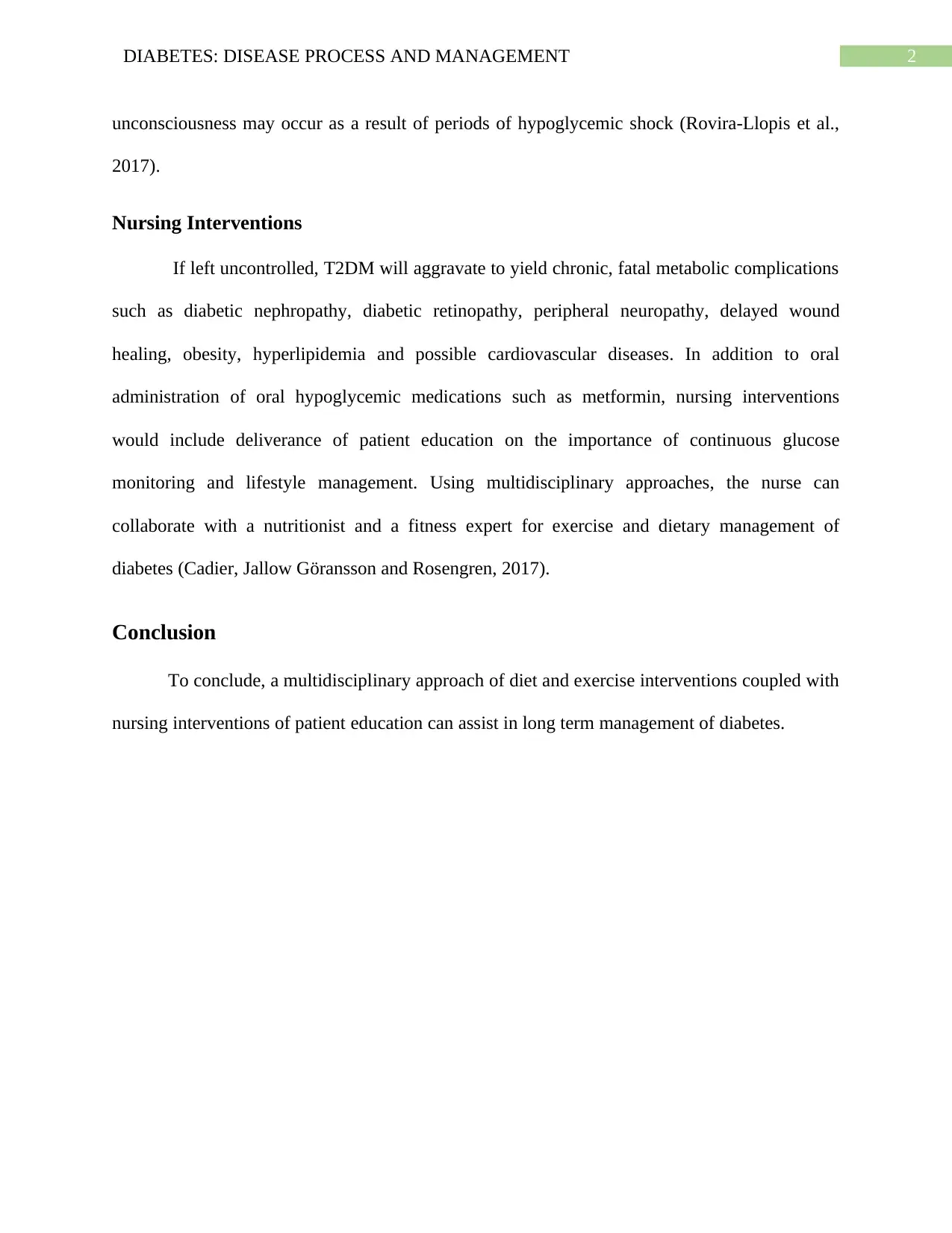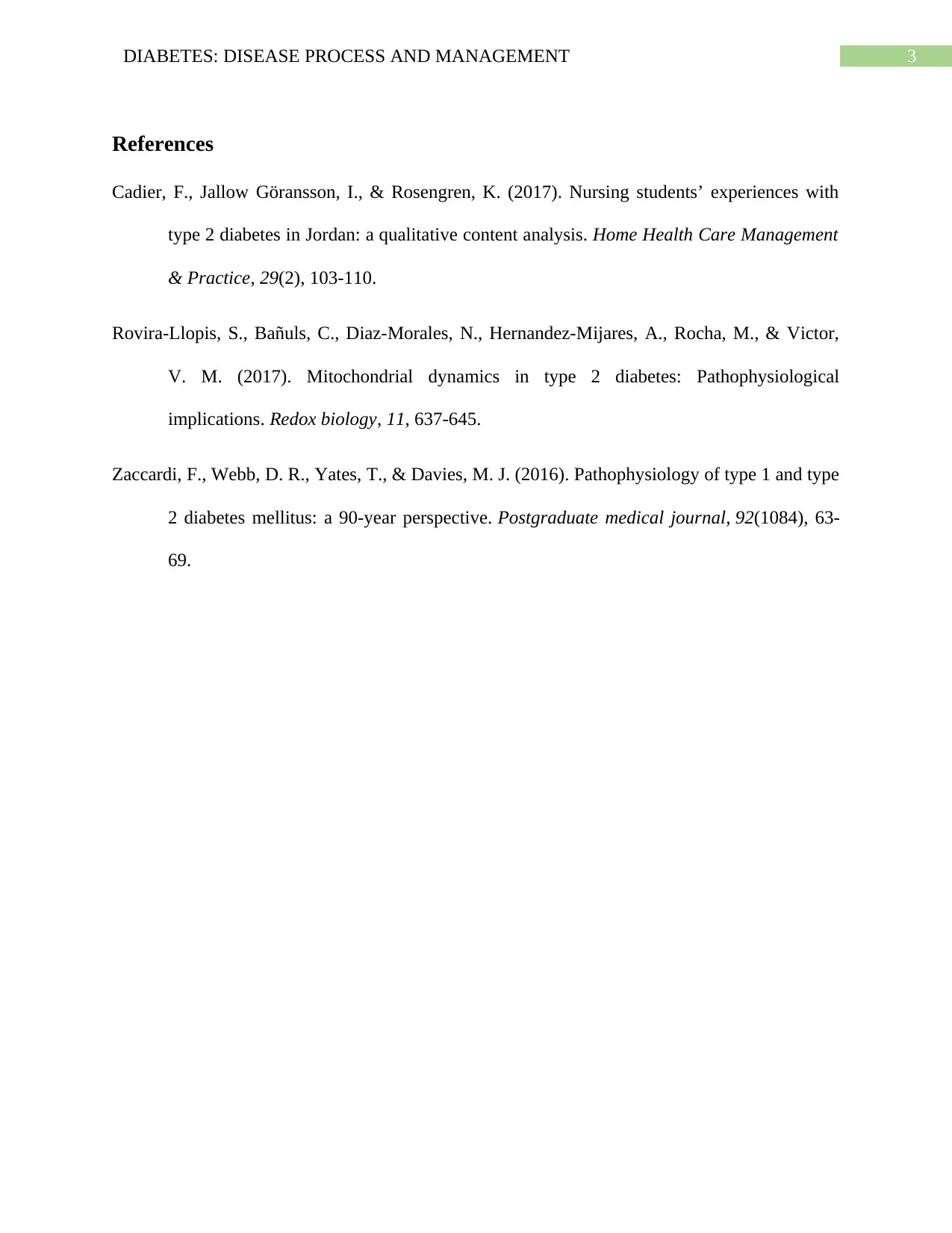University Nursing Report: Diabetes Disease Process and Management
VerifiedAdded on 2022/08/11
|4
|581
|12
Report
AI Summary
This report provides an overview of Type 2 Diabetes Mellitus (T2DM), focusing on its disease process, assessment, and management. The pathophysiology section explains how impaired insulin potency and insulin resistance, influenced by lifestyle factors and genetics, lead to hyperglycemia and metabolic effects. Assessments include blood glucose tests (glycosylated hemoglobin, fasting, and postprandial levels) and physical examinations, noting potential abnormalities like reduced reflexes, vision changes, and hypertension. Nursing interventions emphasize patient education on continuous glucose monitoring and lifestyle management, with a multidisciplinary approach involving nutritionists and fitness experts. The report also lists potential complications such as diabetic nephropathy and retinopathy, highlighting the importance of proactive care. References are included to support the information presented. The report aims to provide a comprehensive understanding of T2DM, including its causes, effects, and management strategies.
1 out of 4











![[object Object]](/_next/static/media/star-bottom.7253800d.svg)